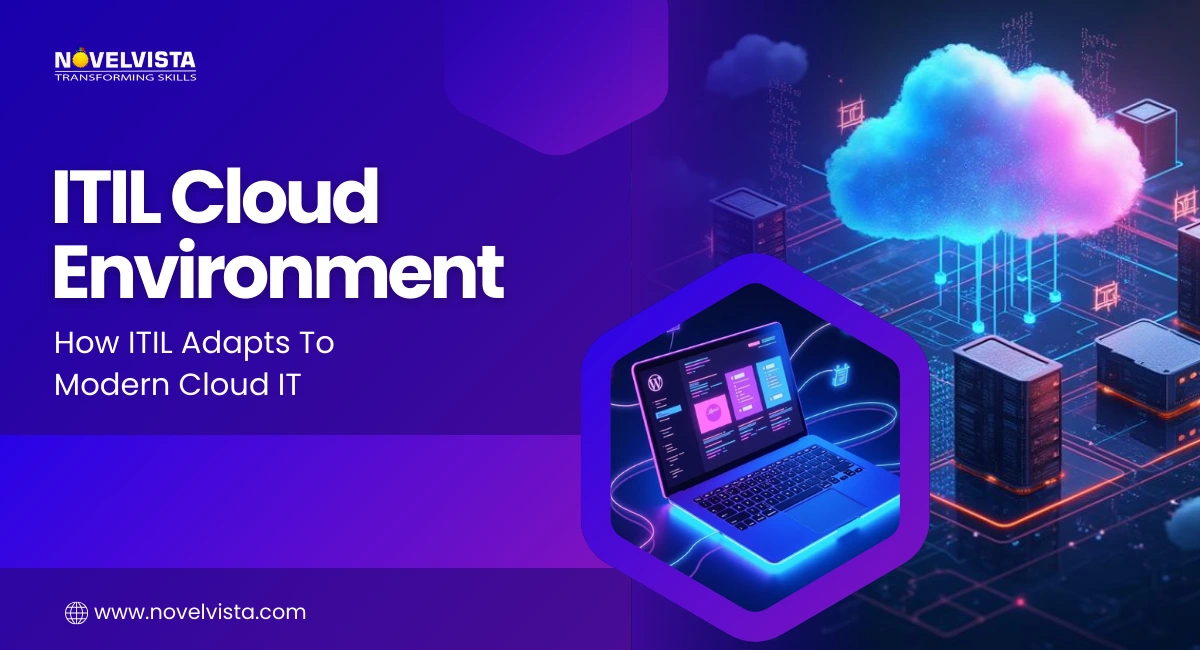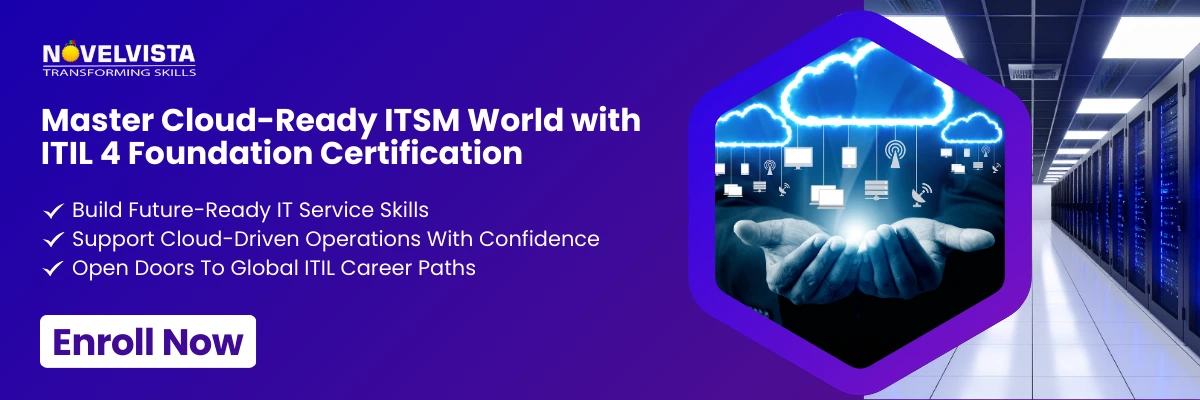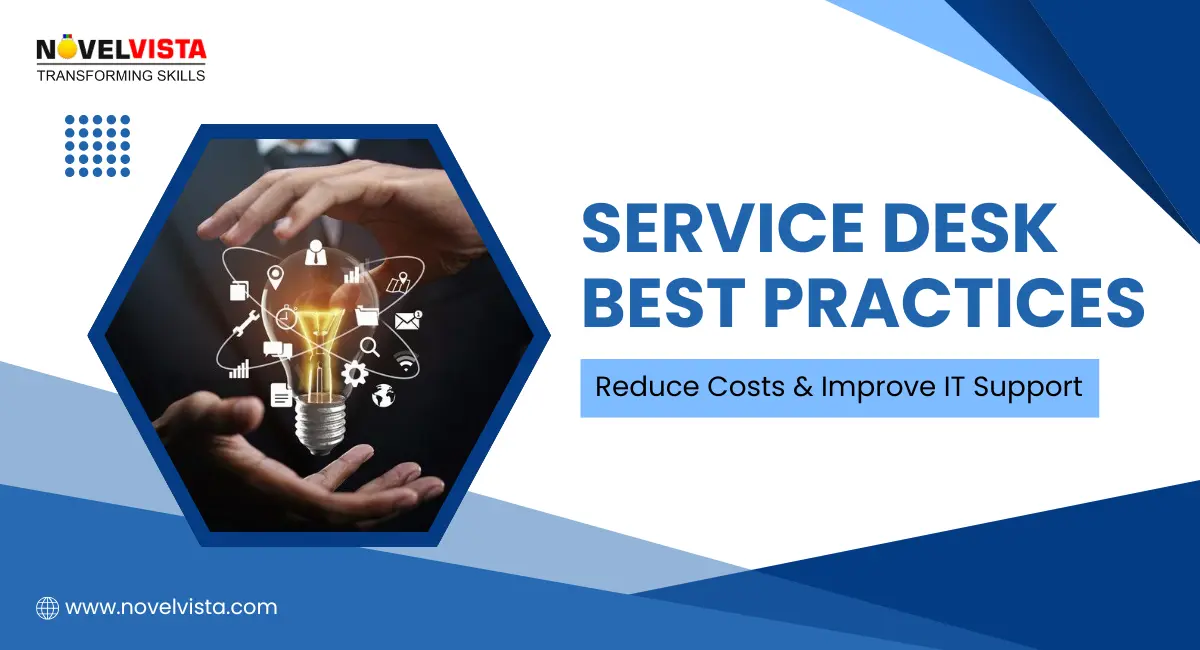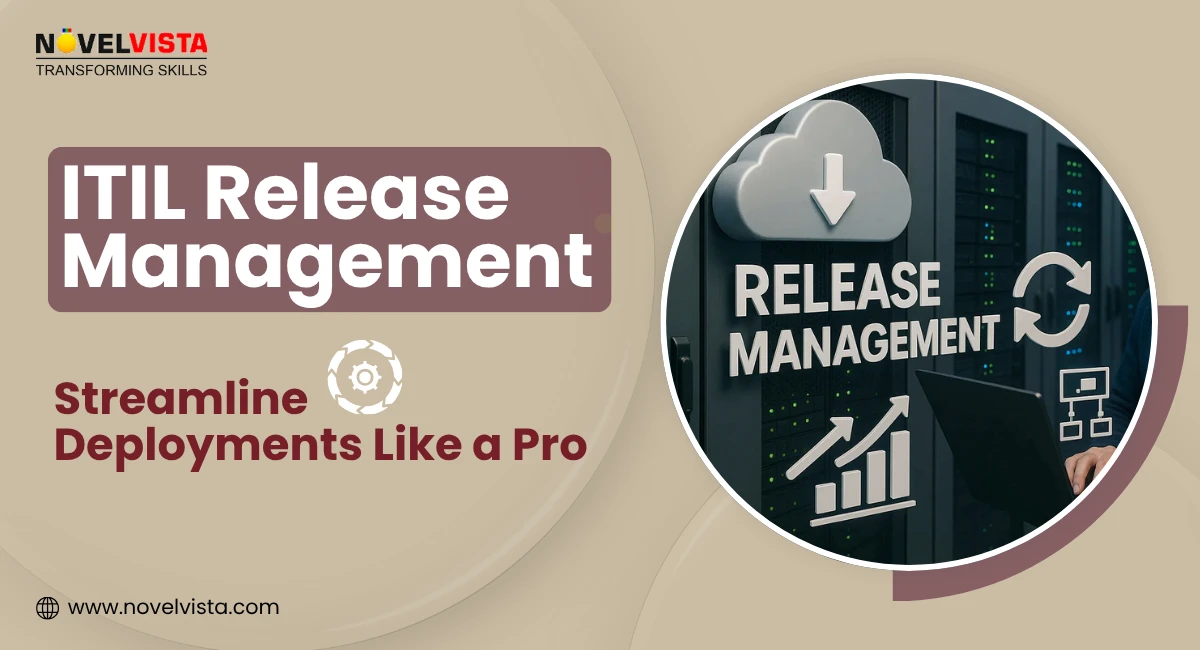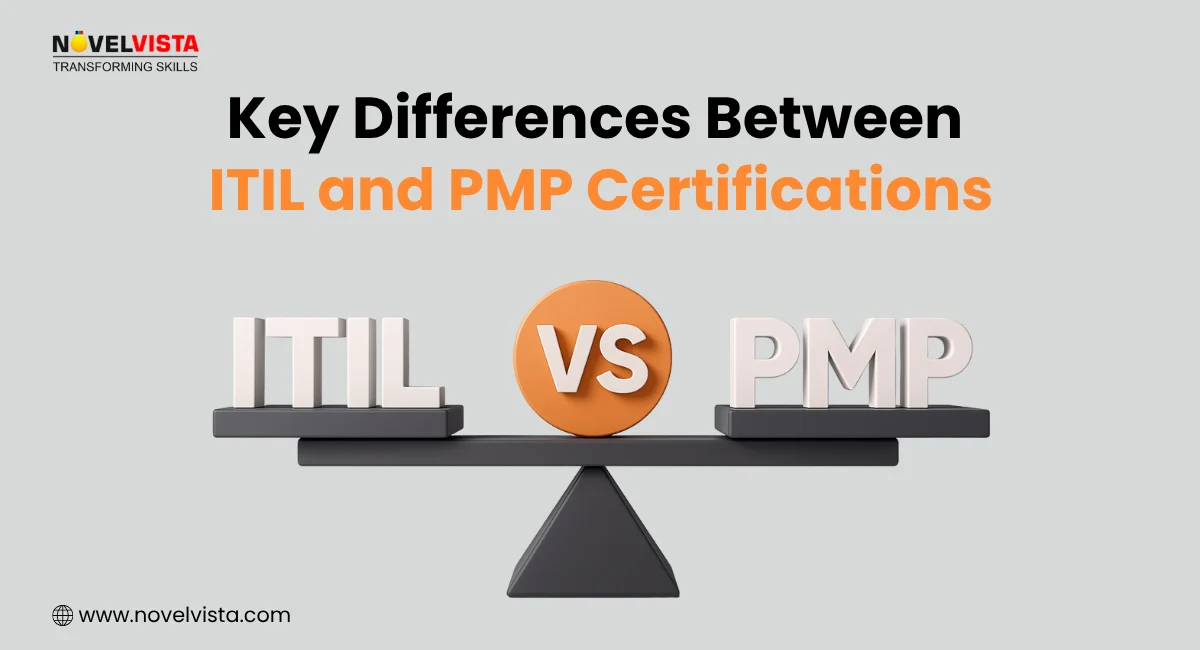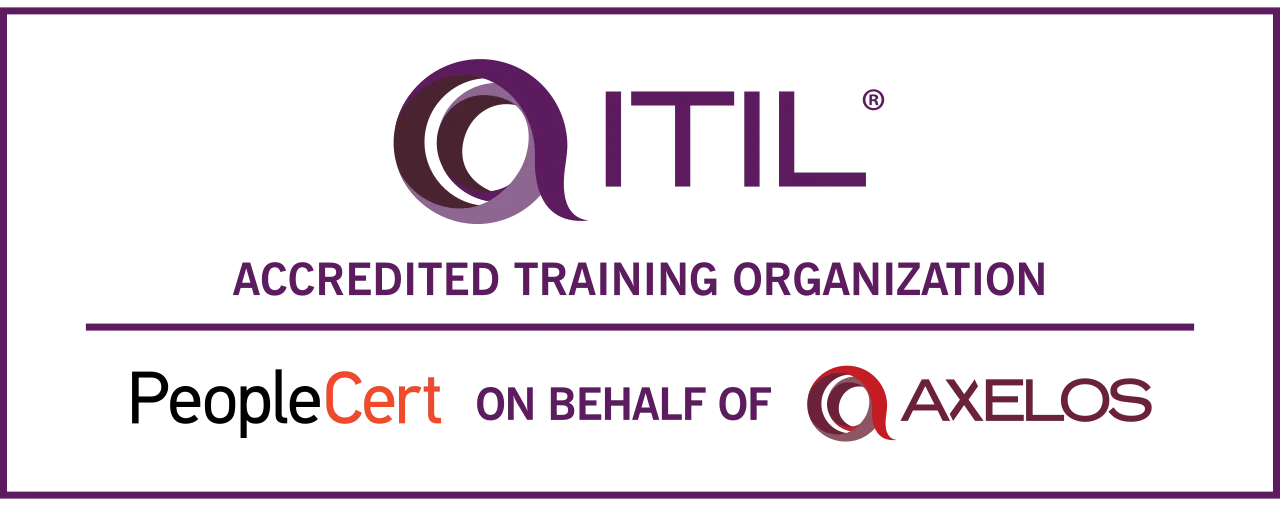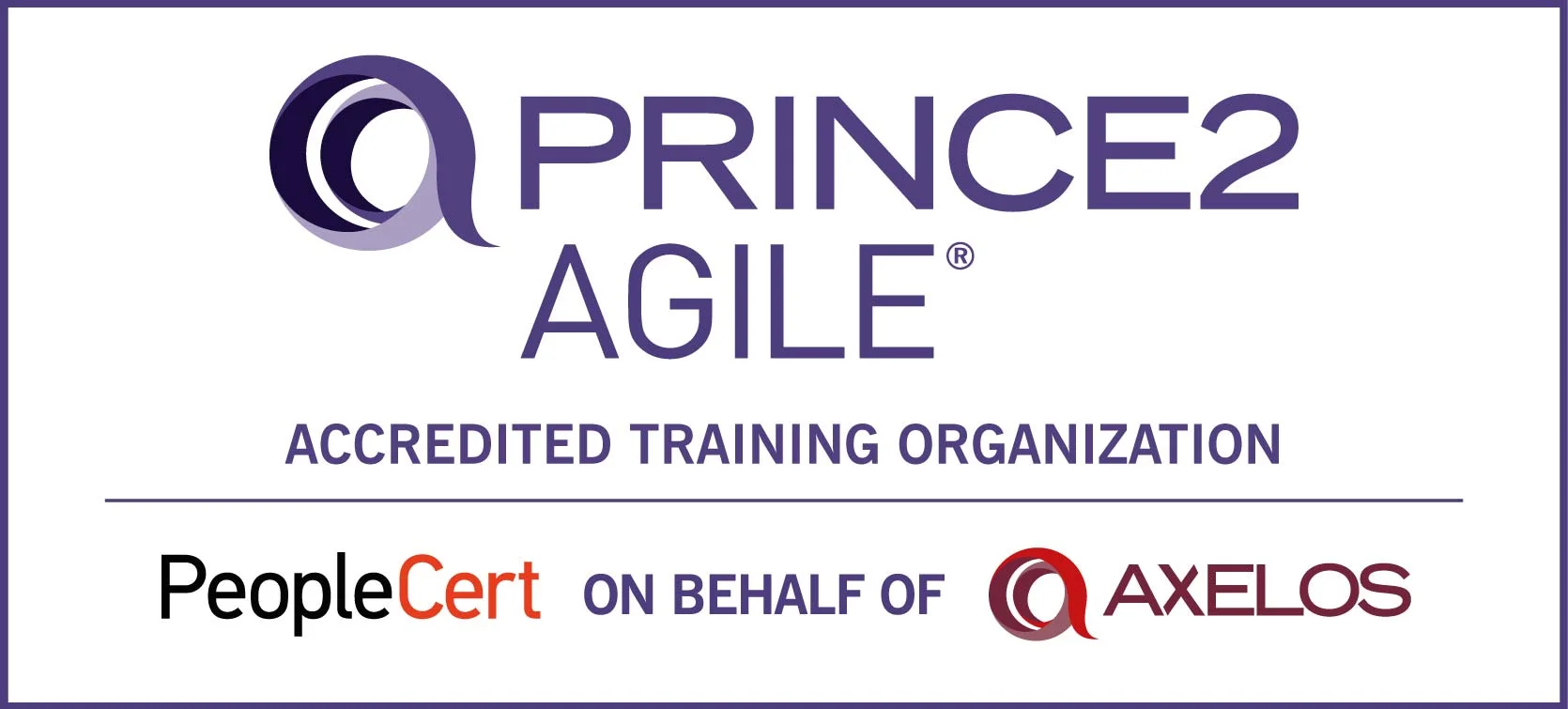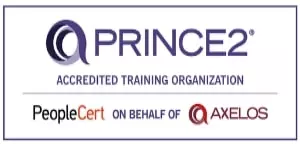- What Is a Cloud Environment? A Simple Start
- How ITIL Adapts to Cloud and Hybrid Setups
- Key Elements of the ITIL Cloud Environment
- ITIL in a Hybrid Cloud Environment
- Cloud Development Environment and ITIL
- Change Management in Cloud Environment
- Cloud-Based Change Management Best Practices
- Designing Services for the ITIL Cloud Environment
- Security and Risk in Cloud ITIL Models
- Value Delivery and Continual Improvement in Cloud
- Real-World Examples of ITIL in Cloud
- Conclusion: ITIL’s Role in Modern Cloud IT
Many teams shift to the cloud expecting fewer issues, faster delivery, and less firefighting, yet they still end up managing scattered tools, unclear ownership, and frequent service gaps. That’s where the ITIL Cloud Environment makes a real difference. It gives structure to cloud operations without slowing anything down. Right from understanding what is cloud environment is to running stable services across multiple platforms, ITIL helps teams bring order to the fast-moving cloud world.
In this guide, you’ll see how ITIL fits into cloud setups, how it supports hybrid models, and how it improves everyday IT work inside a modern cloud environment.
What Is a Cloud Environment? A Simple Start
To keep it simple, a cloud environment refers to delivering computing services like storage, servers, and applications over the internet rather than physical machines. It has become the backbone of many businesses because it’s flexible, scalable, and faster to update.
This is where the ITIL Cloud Environment becomes useful. It helps teams manage these cloud services with steady processes, service-focused thinking, and better control. As cloud becomes a core part of IT, ITIL’s role grows stronger in keeping services reliable and customer-friendly.
How ITIL Adapts to Cloud and Hybrid Setups
The strength of ITIL comes from its clear structure, practices, the service value system, and the lifecycle-based view of services. These same ideas work smoothly even when teams shift from on-premise systems to cloud and Hybrid Cloud Environment setups.
Cloud setups evolve quickly, and ITIL supports this pace with flexible practices that guide teams through design, transition, operation, and improvement. Even when businesses mix cloud and on-premise tools, ITIL helps them stay consistent. This is why the ITIL Cloud Environment stays relevant even as cloud adoption continues to grow.
Key Elements of the ITIL Cloud Environment
Core ITIL areas take a slightly different shape when applied to cloud services:
- Design: Teams prepare for scale, data distribution, API connections, and multi-region setups.
- Transition: Deployments move faster with automation and cloud-native tools.
- Operation: Monitoring becomes real-time, and teams rely heavily on dashboards and alerts.
- Improvement: Cloud usage offers constant data, making improvements easier and more targeted.
The ITIL Cloud Environment supports everyday cloud operations by helping teams manage automated deployments, serverless workloads, and quick releases without losing control over service quality.
In real teams, these stages look slightly different because cloud brings automation, distributed regions, and high-speed changes. We’ve watched many teams rely on dashboards, alerts, and automated workflows to keep services stable. ITIL fits naturally here by giving them a predictable way to control everything happening in the background.
ITIL in a Hybrid Cloud Environment
Most companies don’t run on the cloud alone. They use a Hybrid Cloud Environment, where cloud and on-premise tools work together. This setup is powerful but easily becomes confusing without the right approach.
Here’s how ITIL helps:
- Keeps governance consistent across platforms
- Makes roles and responsibilities clear
- Ensures SLAs work for both cloud and non-cloud systems
- Helps teams avoid fragmented processes
With ITIL guiding the flow, a Hybrid Cloud Environment becomes more organized and easier to manage, even when multiple providers or tools are involved.
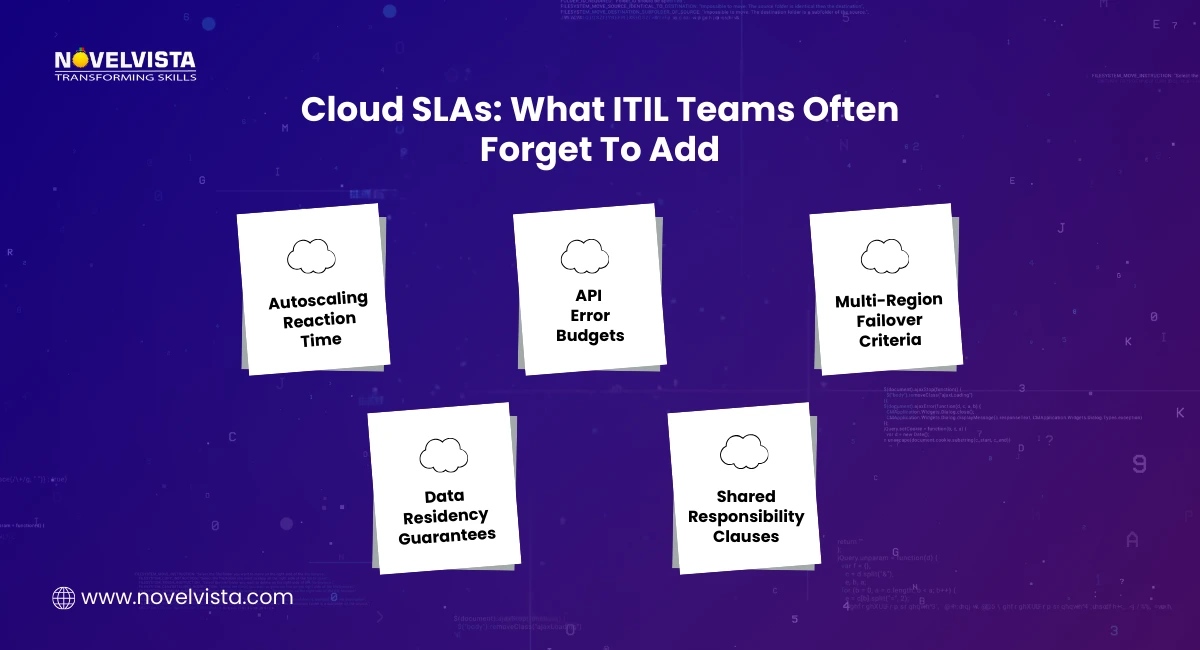
Cloud Development Environment and ITIL
A Cloud Development Environment is where developers build, test, and deploy applications using cloud-native tools. It often includes CI/CD pipelines, automation, and rapid feedback loops.
ITIL fits well here because it encourages steady workflows without blocking speed. By aligning DevOps, Agile, and CI/CD with ITIL 4 principles, teams can move fast while still keeping traceability, documentation, and service quality in check.
With the Cloud Development Environment, ITIL helps balance quick releases with proper governance so teams don’t lose visibility or control as development speeds up.
Grab ITIL Cloud Environment Starter Toolkit
Get practical templates to map cloud services,
assign ownership, and fix hybrid gaps. Bring instant clarity
to your cloud setup.
Change Management in Cloud Environment
The Change Management in Cloud Environment topic is important because the cloud moves fast, and updates happen constantly. Cloud services often receive automatic changes from vendors, making it harder for teams to track what’s happening behind the scenes.
Here’s what makes cloud change tricky:
- High-frequency releases
- Shared responsibility between the customer and the cloud provider
- Distributed systems where one change affects many components
- Need for fast rollbacks and real-time monitoring
This is why Change Management in Cloud Environment requires a smarter and more flexible approach compared to old on-premise models. ITIL helps guide this balance between speed and safety.
From our experience, cloud change challenges are usually not caused by the volume of changes but the lack of visibility. ITIL fills this gap by giving teams a smarter structure to track what changes, who made them, and how they affect other components.
To dive deeper into how change workflows actually operate, why they matter, and how ITIL simplifies them, you can check out our detailed breakdown: ITIL Change Management Explained
Cloud-Based Change Management Best Practices
Cloud change work moves faster than traditional setups, which is why teams need a modern approach to Cloud Change Management. ITIL offers simple, reliable steps that fit naturally into cloud pipelines.
Here are practical ways to strengthen Change Management in a Cloud Environment without slowing delivery:
- Use automated approvals for low-risk changes
- Connect CI/CD tools with ITIL workflows
- Monitor deployments in real time
- Keep rollback and versioning ready for quick fixes
- Keep shared logs to track vendor-driven updates
These best practices come directly from cloud teams that reduced deployment failures by pairing ITIL with automated pipelines. When approvals, logs, and monitoring run automatically, changes move faster while still staying safe and controlled.
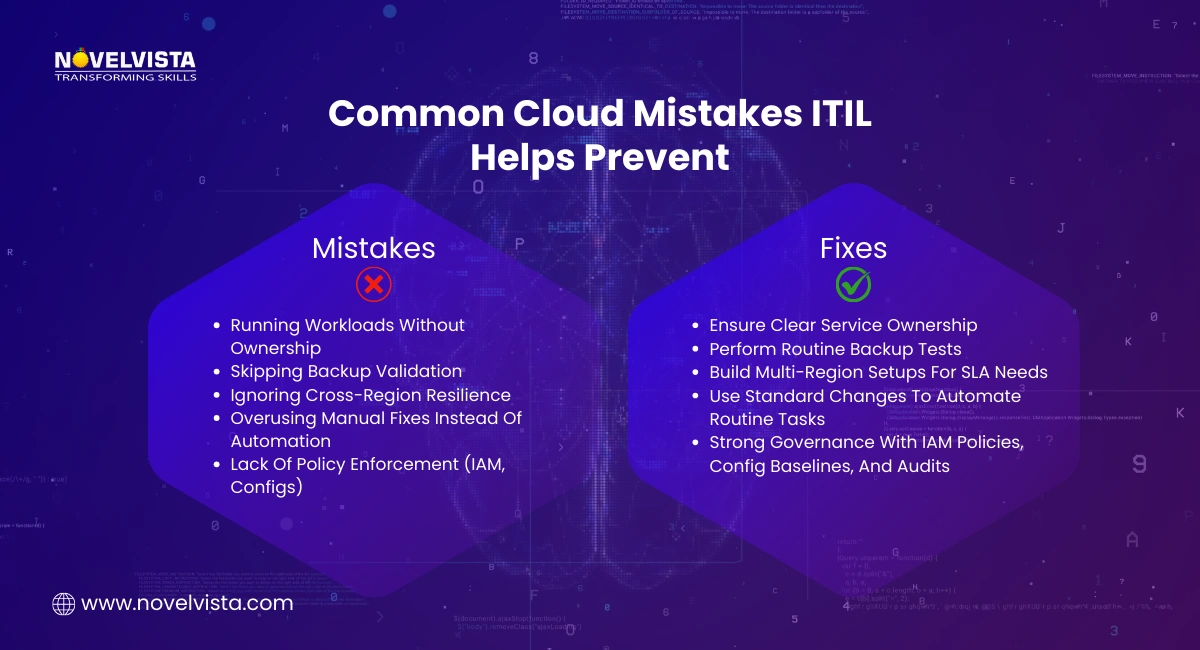
Designing Services for the ITIL Cloud Environment
Good service design becomes even more important when everything runs on the cloud. The ITIL Cloud Environment helps teams build services that can scale, recover quickly, and stay available across regions.
Key focus areas include:
- Designing for resilience
- Planning multi-region performance
- Setting SLAs that support flexible workloads
- Ensuring compliance and cost visibility
With ITIL guiding the design stage, services become more dependable even during high usage or unexpected failures. This also strengthens the overall Hybrid Cloud Environment since cloud and on-premise components can follow the same design rules.
Security and Risk in Cloud ITIL Models
Security can get complicated when data, workloads, and identities spread across multiple platforms. The ITIL Cloud Environment helps teams set rules for how access, data protection, and incident responses should work.
ITIL supports cloud risk work by focusing on:
- Strong identity and access management
- Integration with DR and BCP plans
- Data encryption and region-specific compliance
- Monitoring logs across cloud and on-prem environments
This becomes even more useful in a Hybrid Cloud Environment, where visibility can easily get lost between platforms. With ITIL’s structure, teams reduce blind spots and handle risks before they spread.
Value Delivery and Continual Improvement in Cloud
Cloud gives teams constant data about performance and cost. ITIL turns this into real improvements. Using the ITIL Cloud Environment, teams can track usage, errors, and customer feedback in a steady loop.
Helpful areas to focus on:
- Cost optimization
- Faster response to incidents
- Reviewing logs for improvement
- Using monitoring dashboards to spot patterns
Cloud also helps IT teams automate small fixes, which fits well with ITIL’s improvement mindset. Adding this to your Hybrid Cloud Environment makes everyday operations smoother and more predictable.
Real-World Examples of ITIL in Cloud
Seeing ITIL Cloud Environment practices in action makes it easier to understand how teams actually use them. Below are simple, practical examples that show how different industries blend ITIL with cloud setups to fix daily operational challenges:
1. Retail:
A large retail brand moved from scattered manual processes to a steady model built on ITIL Cloud Environment principles. With clear ownership and service mapping, they strengthened multi-region uptime and reduced customer-impacting incidents during peak sales days. Automated monitoring tied to incident workflows helped them react faster whenever a region slowed down.
2. Fintech:
A growing fintech startup adopted Cloud Change Management to bring stability to its CI/CD pipeline. Instead of pushing code blindly, every change was logged, assessed for risk, and rolled out through controlled steps. This reduced deployment failures and kept their financial services stable even during heavy traffic.
3. Healthcare:
A healthcare provider running a Hybrid Cloud Environment used ITIL practices to meet strict audit and compliance demands. By standardizing logs, backups, access rules, and incident reporting, they stayed ready for external audits at any time. ITIL also helped them document responsibilities between cloud and on-prem teams, which avoided gaps during security checks.
4. EdTech:
An education platform scaled its Cloud Development Environment rapidly as user traffic increased. ITIL helped them set up capacity planning, version control steps, and request handling guidelines so developers didn’t overwrite each other’s work. This improved service stability during student exam seasons.
Each example shows that ITIL isn’t theory — it gives teams daily structure, reduces mistakes, and keeps cloud services steady even when things get busy.
Conclusion: ITIL’s Role in Modern Cloud IT
The ITIL Cloud Environment brings stability, structure, and clarity into cloud operations without slowing teams down. It supports steady service design, smoother deployments, better risk control, and stronger teamwork across both cloud and on-prem systems. Even as cloud grows and new tools appear, ITIL remains a trusted way to manage services in a clean and organized way. With trends like automation and AI shaping the future, ITIL serves as a strong guide to keep cloud setups reliable, scalable, and ready for new challenges.
Next Step
If you want to fully understand how ITIL works in cloud and hybrid setups, the best next move is getting certified. NovelVista’s ITIL 4 Foundation training helps you build the right skills with simple explanations, real cloud examples, and hands-on guidance. NovelVista is a PeopleCert Accredited Training Organization (ATO) trusted by global enterprises. Every ITIL course and guide we publish is fact-checked, regularly updated, and designed to help professionals apply ITIL effectively in real projects.
Frequently Asked Questions
Author Details

Mr.Vikas Sharma
Principal Consultant
I am an Accredited ITIL, ITIL 4, ITIL 4 DITS, ITIL® 4 Strategic Leader, Certified SAFe Practice Consultant , SIAM Professional, PRINCE2 AGILE, Six Sigma Black Belt Trainer with more than 20 years of Industry experience. Working as SIAM consultant managing end-to-end accountability for the performance and delivery of IT services to the users and coordinating delivery, integration, and interoperability across multiple services and suppliers. Trained more than 10000+ participants under various ITSM, Agile & Project Management frameworks like ITIL, SAFe, SIAM, VeriSM, and PRINCE2, Scrum, DevOps, Cloud, etc.
Course Related To This blog
ITIL4 Specialist Monitor Support and Fulfil Certification
ITIL4 Specialist Acquiring & Managing Cloud Services
ITIL 4 Specialist Sustainability in Digital & IT
ITIL® 4 Strategic Leader Digital And IT Strategy (DITS)
ITIL® 4 Specialist Drive Stakeholder Value
ITIL® 4 Specialist High Velocity IT
ITIL® 4 Strategist Direct, Plan & Improve
ITIL® 4 Specialist Create Deliver & Support
ITIL® 4 Foundation Certification
Confused About Certification?
Get Free Consultation Call

